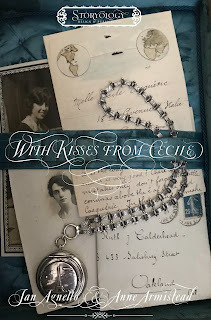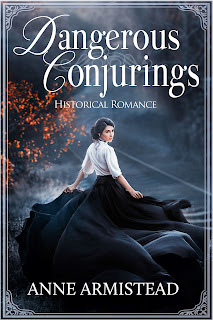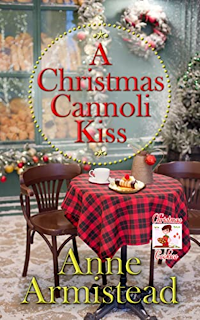Jean M. Roberts's Blog, page 15
January 11, 2024
Author Interview with Stacy Townend
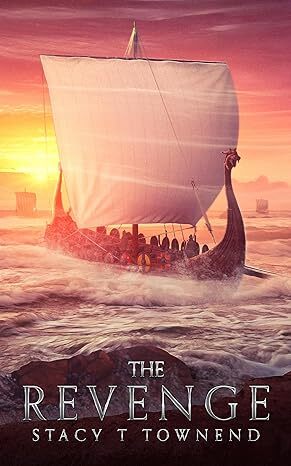
Welcome Readers toanother installment of our author interview series. Today we have the pleasureof chatting with Stacy T. Townend, author of two historical fiction books.
JMR-Welcome to theBooks Delight, Stacy. Tell our readers where you live, what you do for fun andwhat does the perfect day look like?
STT- I live inHuddersfield, West Yorkshire. I enjoy reading and supporting other authors.Spending time with my wife after a busy working week. We enjoy going for a walkwith our little Westie & maybe calling for a beer at a local pub. Spendingtime planning our holidays. 3 booked so far for 2024. The first of which isthis month for my birthday.
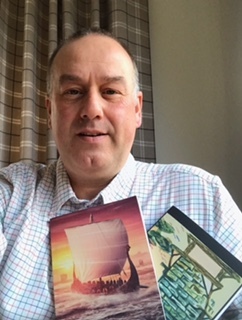
JMR-What’s yourfavorite historical time period? Why?
STT- I have a few, ofcourse I love the era I write about with Mercia, Northumberland and Vikingraiders scouring the lands. I also enjoy reading books around the Romanconquest of Britain. I still have a tender spot for the Napoleonic era thebattles and fights of the wars.
JMR-Who is yourfavorite historical figure? Why? If you could ask them one question, what wouldit be?
STT- Wooo greatquestion, I think I would like to meet Lord Wellington & ask him about hisearlier military career during India. Particularly the battle of Assaye, inlater life he claimed it was his finest battlefield accomplishment.
JMR- How did you cometo be a writer of historical fiction?
STT- By pure accident.I have been fortunate to support authors new and established with advancereviews and beta reads. This provided me with a new set of online friends andsome great reading. One author MJ Porter whose series I was currently readingasked me if I could pick a character from the book for another series who wouldI pick. I provided some notes and plot idea. MJ liked it and said why don’t youhave a go yourself. I laughed to myself sat on the idea for around 6 monthsthen decided to have a go. 10 months later I had my first book ready and withsupport from MJ had it formatted and a book cover. It was a joy writing the 1st book.I never realized how much work a writer had to do to bring the joy of a storyto readers. I had never considered writing historical fiction. I used to makeup stories for my children and have a couple written down, though I have neverprogressed them.
JMR- How does your ‘dayjob’ impact or influence your writing?
STT- I have worked formy local council 21 years and held the role of Electoral Officer I currentlywork as a Recycling Officer, within this role I undertake talks &presentations to schools and adult community groups. I also have to writereports and create workshops & presentations. I think my current role hashelped me become more confident and aware of my own skill sets which gave methe boost to actually try and write my first book. Writing is a very difficultjourney with high & low points, targets to meet and accuracy. My currentrole is similar with deadlines on reports that must be accurate. Intense busyperiods with normal duties and meetings late at night. Getting used to my rolemade planner my writing schedule so much easier.
JMR- Did you visitanyone of the places in your book? Where did you feel closest to yourcharacters?
STT- I visited asection of Offa’s Dyke last summer near Chirk (Wales). Close to the border ofEngland and not far from Holt & Farndon which appear in the books. I drovethrough Holt though did not have time to stop. Visiting the dyke and standingon it, looking at how big it was. It was a great feeling and provided me someadditional background and a change in the plot of book 2 “The Revenge”. It alsoprovided me additional work/plot notes for the 3rd installment “TheJustice.” I also visited Gargrave near Skipton which provided some additionalstory notes for book 2. Nothing like standing in an historical place to feedyour imagination. As I stood upon the dyke near Chirk I envisaged myself asOswi with his faithful warriors around him as the enemy attacked screaming andshouting shield, sword, and axe in hand. Visiting locations is very worthwhileand stimulates your writing ideas.
JMR- Stacy, tell usabout your new book, The Revenge.
STT- The Revengecontinues with the story of Oswi a loyal warrior of Merica. The action startswith King Offa, Oswi and his warriors heading south to battle King Wattus andthe Heastingas tribe who are invading the Sussex lands. The story moves on andis focused on Oswi, Afan of Powy’s & Healfden of the raiders. The threestrands are all seeking Revenge from the battles and deaths in The Betrayal(Book 1). Other new characters are drawn into the fray. Who will survive andwho will get the revenge they seek.
JMR-What projects doyou have in the pipeline?
STT- I am currentlytrying my hand at a small novella. The story will focus one of the newcharacters of The Revenge. It will be a stand-alone story but, in the timeline,fits easily between Book 2 & 3. Book 3 will be started in spring of thisyear and will continue with the adventures of Oswi and his family & friendsas the construction of the dyke begins. The story will focus on Oswi and hiswarriors along with Afan of Powy’s. Ihad originally planned on three books for the series The Mercian Tales. ThoughI have some additional ideas to expand the series should they prove successful.I am currently undertaking some research about the dyke before I start thewrite.
JMR- Tell our readershow to find you on social media and the web.
STT- I can be found onFacebook & X via my name Stacy Townend. I am also on Threads/Discord/Goodreadsunder my name. https://t.co/AWghDTeU6GThis is the link to my account on WordPress. I use all of the above to reachout about my books.
JMR- What question wereyou hoping I’d ask but didn’t?
STT-
JMR- Thank you, Stacy,for stopping by. Your books look really great! Readers, I’ve included a link toStacy’s books below. Please be sure to check them out.
January 10, 2024
Interview with Author Penny Haw

Welcome Readers toanother installment of our author interview series. Today we have the pleasureof chatting with Penny, author of two historical fiction books.
JMR-Welcome to theBooks Delight, Penny. Tell our readers where you live, what you do for fun andwhat does the perfect day look like?
PH-Thank you, Jeanie.It’s pleasure to be here! I live in a fishing village called Hout Bay, which islittle over 20 kilometers from Cape Town on the southern tip of South Africa.It’s a gorgeous spot where the Atlantic Ocean crashes against the mountains,except where it’s tamed by sandy, white beaches. Every morning my husband and Iwalk our three dogs along the track above the sea. The views never get tired.I’m a lover of the outdoors and animals so my days are incomplete without ahike with my hounds. Sometimes we head down the mountain to allow the dogs toromp on the beach. I also run—neither fast nor far, but regularly—to try andcounterbalance the many hours I spend upon my butt at my desk. I enjoy cookingand, of course, like most writers, I am a great reader. The perfect day? A runin the cool of the morning, a dog walk, a swim (in summer) and then anuninterrupted day of writing in my office followed by a good meal and a fewhours with a book.

JMR-What’s yourfavorite historical time period? Why?
PH-My books are set inthe late 19th Century and early 20th Century. I’mfascinated by the true lives of relatively unknown women who thrived duringthese years despite the odds stacked against by the patriarchy, church, andreligion. The main characters in my novels—Aleen Cust, Britain and Ireland’sfirst female veterinary surgeon, and Bertha Benz, one of the world’s earliest motoringentrepreneurs—were trailblazers in professions dominated by men. Their livesare inspirational, and I absolutely loved researching and writing about them.
JMR-Who is yourfavorite historical figure? Why? If you could ask them one question, what wouldit be?
PH-Because I loveanimals and once dreamed of becoming a veterinarian, Aleen Cust is my favorite.My novel, The Invincible Miss Cust describes the extent of her passionand determination to live a life of purpose in the Victorian era and to workwith animals. She was extraordinary. If I could ask her anything it would be toconfirm the source of her determination. In my version of her life, I reasonthat she was driven by her love for animals and her desire to do more with herlife than be an aristocratic wife and mother. I’d love to know if I was right.What did I get wrong? What don’t I know? Of course, Bertha Benz—the focus of mynovel, The Woman at the Wheel—is also a favorite. I’d ask her how shemanaged to juggle the roles of wife and mother of five with her deepinvolvement with the invention and business of the Benz motorwagen.
JMR- How did you cometo be a writer of historical fiction?
PH-It happened bychance! I’d written contemporary fiction and was planning another, which Ithought I’d set in a veterinary practice. This led me to researching when womenfirst became veterinary surgeons. That’s how I came across Aleen Cust. Herstory was gripping. I couldn’t believe that no one had written historicalfiction about her. I couldn’t resist and one thing led to another.
JMR- You worked as ajournalist and columnist for newspapers and magazines, how did this impact or helpform your writing style?
PH-Having had a longcareer as a writer means that I am disciplined about my work. I’m accustomed toworking to deadlines and, even when they’re self-imposed, have great respectfor them. It seems like the luckiest thing to me that I love writing. I can’timagine doing anything else. However, as much as I enjoy it, I don’tromanticize writing and wait for the muse to appear. I’m pragmatic andbusinesslike about the process. Also, my work as a journalist prepared me forthe process of research. I enjoy it but have learned not to allow it to takeover the job. On the other hand, I’ve had to learn to adjust certain thingsabout my style since trying my hand at fiction. As a journalist, one doesn’tleave readers guessing. I’m still learning not to over-explain in my fiction.But isn’t that one of the joys of writer? The fact that we’re always learningand can always improve?
JMR- Did you visitanyone of the places in your book? Where did you feel closest to yourcharacters?
PH-I’ve visited severalplaces in Ireland, Scotland, and England (where The Invincible Miss Custis set) and Germany (where The Woman at the Wheel is set). Iparticularly love the Irish countryside and can imagine Aleen Cust riding herwhite Arabian stallion, Nasser across the green fields. The Black Forest areain Baden-Württemberg in southwest Germany, where Bertha lived, is alsomagnificent. It was easy to picture her and Carl there, particularly in thepicnic scene, when they meet.
JMR- Penny, tell usabout your new book, The Woman at the Wheel.
PH- TheWoman at the Wheel is based on the true story of BerthaBenz, who was the wife of the man known as the “Father of the Automobile”, CarlBenz. Bertha lived largely in Carl’s shadow but when, while working as ajournalist, I read about a journey Bertha and her teenage sons made in the Benzmotorwagen in 1888, I realized that there was more to her than most accountslet on. My research proved as much. She was inventive, entrepreneurial,adventurous, astute, and as much an extraordinary visionary as Carl was. TheWoman at the Wheel celebrates Bertha’s foresight, wisdom, and manycontributions to the development of the world’s first commercially producedmotor vehicle. It is also a story of perseverance, resilience, family,friendship, and love.
JMR-What projects doyou have in the pipeline?
PH-I am joyfullycontracted to write two more works of biographical historical fiction for mypublisher, Sourcebooks. I’m busy with the edits on the first of the two now. Itis about archaeologist and paleoanthropologist, Mary Leakey and is setprimarily in East Africa. It’ll be published early in 2025. The next—also basedon the life of a woman from history—will be published in 2026.
JMR- Tell our readershow to find you on social media and the web.
https://www.instagram.com/pennyhaw/
https://www.threads.net/@pennyhaw
https://www.facebook.com/PennyHawAuthor
JMR- What question wereyou hoping I’d ask but didn’t?
PH-Oh, I love thisquestion and my response is based on something I’ve been thinking about a greatdeal recently as I recognize how challenging the book publishing business is.The question one might ask is: “What motivates you to write?” My answer? I doit for the enjoyment I get from storytelling and the process of writing, andthe fact that I will never stop learning as long as I write. As others havesaid, books are the closest thing to magic we have. As authors, we createsomething out of nothing and that something takes readers on journeys to placesin the world and in their minds that they might otherwise never visit. That’swhat motivates me to write.
JMR- Thank you, Penny,for stopping by. Your books look really great! Readers, I’ve included a link toPenny’s books below. Please be sure to check them out.


January 9, 2024
Interview with author Elisabeth Grace Foley

WelcomeReaders to another installment of our author interview series. Today we havethe pleasure of chatting with Elisabeth Grace Foley, author of numeroushistorical fiction books.
JMR-Welcometo the Books Delight, Elisabeth. Tell our readers where you live, what you dofor fun and what does the perfect day look like?
EGF-Thank you so much for having me! I currently live in upstate New York, where Iwas born and raised. In my life as it looks right now, a perfect day wouldinvolve putting in a few good hours writing, a good amount of time spentoutside walking or gardening, some time spent reading a good book, and timespent with my family.
Besidesreading and writing, some of my hobbies include music, crocheting, genealogy,and watching old movies and German football.
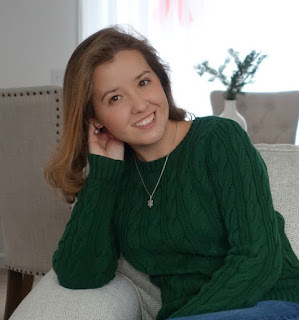
JMR-What’syour favorite historical time period? Why?
EGF-Broadly speaking, it’s late 19th-century and early 20th-centuryAmerica. I went through a Civil-War-buff phase as a teen and I go on a bit of aWorld War II kick from time to time, and those two events kind of bookend myera of interest. My special interest is the American West during that period,simply because the history of it fascinates me. I think when most people thinkof “westerns” they tend to think of the 1870s-1880s, the era of the greatcattle drives and most of the famous (or infamous) lawmen and outlaws; butsince I’m very fond of the general popular culture/fashions/ambience of theEdwardian period and the 1930s-1940s, I love exploring what the West was likeduring those decades in my fiction.
JMR-Whois your favorite historical figure? Why? If you could ask them one question,what would it be?
EGF-This is always a hard question for me because I’ve never really had onehistorical “hero” or one specific historical figure I was obsessed with! I’d bemore likely to want to pick the brains of my favorite authors. Jane Austen, forinstance—though I don’t know what one question you could ask her beyond “whatis the secret of your genius?” I can imagine having some fascinatingconversations about literature and philosophy and history with some of myfavorite mystery authors: Josephine Tey, Ellis Peters, Elizabeth Daly—and MaryRoberts Rinehart, who also did a lot of traveling in the American West (but forsome reason never took it into her head to write a murder mystery set there!).
JMR-How did you come to be a writer of historical fiction?
EGF-I started writing stories for my own amusement pretty much as soon as I learnedhow to write, and by my pre-teen years I was thinking about being an authorwhen I grew up. All through my childhood I was always most drawn to books andstories with a historical setting—I grew up with the Little House series,Marguerite Henry’s horse books, the original American Girl books, and lots ofother historical fiction and older children’s classics. Historical has alwaysjust felt like home to me. When I began getting serious about writing andbecoming a published author, that was what I wanted to write.
JMR-Many of your books are set in the American West; what is it about that regionthat draws you to it?
EGF-I think it began with being a horse-crazy little girl! I always liked Westernmovies and TV shows growing up, and I’m sure it was partly because of all thehorses. Aside from that, I was always drawn to stories with an Americanfrontier/pioneer setting, and I think it was because the sense of adventureabout them—the beauty combined with the challenge and dangers of the frontierlandscape. In my teens I began reading more Western history and early Westernfiction, and to focus in more on the era as a special interest. I’m stillfascinated by that beauty and sense of adventure about the land, thecattle-ranching industry and culture, and by the spunk and resilience and thecolorful human variety of the ordinary people who settled the frontier.
JMR-Did you visit anyone of the places in your book? Where did you feel closest toyour characters?
EGF-I have never actually been west of the Mississippi! For my Western fiction I’vebasically just immersed myself in the setting through lots of reading and throughphotographs. So many of the actual landscapes are still the same, in a way thatdazzles me a little bit when I see present-day photos; but for things liketowns, roads, buildings and so forth, it’s always neat to find historicalphotos that fit with the scenes I’m imagining in my head (for my Mrs. MeadeMysteries series, for instance, I’ve been able to find a lot of neat picturesfrom turn-of-the-century Colorado).
JMR-Elisabeth, tell us about your novel Land of Hills and Valleys.
EGF-Lena Campbell never knew her grandfather, but she always dreamed of visitingWyoming, where her mother was born and raised. When she receives word that hergrandfather is dead and his Wyoming ranch belongs to her, she jumps at thechance. Only later does she learn that her grandfather was murdered, and themurder is still unsolved.
Inspite of this shadow hanging over her, Lena thrives in her new life—and fallsin love. But when new evidence about the McKay murder emerges and implicatesthe man she loves, she’s assailed by frightening doubts. Only figuring out thereal truth of her grandfather’s murder can save her from losing everything shecares about.
Setin the mid-1930s, Land of Hills andValleys is stylistically very much inspired by Mary Stewart’s vintageromantic-suspense novels: narrated by a spunky yet vulnerable young heroinethrown into new surroundings and the tangles of an unsolved crime. It’s alittle less formally structured than a traditional whodunit, but the murdermystery is still very much at the heart of the story. While Stewart’s heroinesusually had their adventures in glamorous European locales, this is a veryclassic Western ranch setting that also has a Depression-era small-town flavorand a bit of courtroom drama thrown in.
JMR-Whatprojects do you have in the pipeline?
EGF-I am tentatively planning to release a new collection of Western short storiesthis year. I’ve also been writing some companion short stories for the Mrs.Meade Mysteries (the first one just published in November, and available freefor your e-reader!), and will probably publish another one or two as I writethem. I have a few “big” projects in the works going more slowly—anotherWestern mystery novel similar to Land ofHills and Valleys, this time set in Montana just after World War II, and acouple other historical novels in slightly different subgenres than anythingI’ve done so far. No exact timeline yet for any of them, but they’ll be along.
JMR-Tell our readers how to find you on social media and the web.
EGF-You can find me and all my books on my author website,where I also have a (sporadically updated!) blog. On social media, I’m mostactive on Instagramand Twitter;and if you like to keep up via email you can sign up for my quarterly newsletter(I offer a free novella as a thank-you to new subscribers!).
JMR-What question were you hoping I’d ask but didn’t?
EGF-Well, I honestly love to talk about how my books combine the tropes andcharacteristics of classic mystery and romantic-suspense novels with anAmerican, and particularly a rural/western American, setting. It’s a niche thatthere doesn’t seem to be too many authors working in! The Golden Agemurder-mystery novels of the mid-20th century are what I read mostof myself, and I think British authors really carry off the trophy for the bestbooks in the genre; but since I feel most at home writing an American historicalsetting, I’ve really had fun locating mystery plots there and developing astyle inspired by classic mystery authors from across the pond. I drawinspiration from some more obscure corners of American literature, too—forinstance, the Mrs. Meade Mysteries were partly inspired by the books of AnnaKatharine Green, one of America’s earliest mystery authors and creator of notone but two fictional femaledetectives, Miss Amelia Butterworth and Violet Strange.

JMR-Thank you, Elisabeth, for stopping by. Your books look really great! Readers,I’ve included a link to Elisabeth’s books below. Please be sure to check themout.


January 8, 2024
Interview with Author Ronnie Ashmore
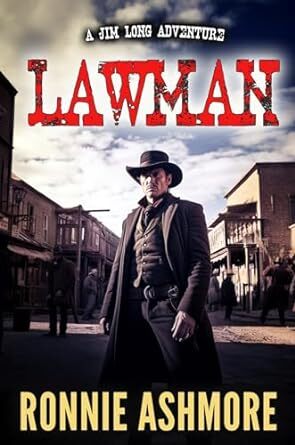
Welcome Readers toanother installment of our author interview series. Today we have the pleasureof chatting with Ronnie Ashmore, author of Western Novel and Crime Fiction.
JMR-Welcome to theBooks Delight, Ronnie. Tell our readers where you live, what you do for fun andwhat does the perfect day look like?
RA- I live inStephenville, Texas. Fun for me is either travelling, playing golf, or justhanging out and smoking a good cigar.

JMR-What’s yourfavorite historical time period? Why?
RA- I have a deeppassion for the 19th Century, the old west era, and I think it's because I likethe history of that time period and the people that lived in that world.
JMR-Who is yourfavorite historical figure? Why? If you could ask them one question, what wouldit be?
RA-Way too many toconsider, but off the top of my head I would say Bill Hickok. His lifefascinates me because it is hard to separate fact from fiction. Often he wasthe one telling the lies. My question would be, "Why didn't you just gohome to your wife?"
JMR- How did you cometo be a writer of historical fiction?
RA-Well, I don'tconsider myself a historical fiction writer, I consider myself a western and acrime writer. While i do include and am respectful and truthful with the factsh,my people aren't tied down to those facts.
JMR- Western Fiction isa subgenre of Historical Fiction. Other than setting, what are key elementsthat set it apart from standard HisFic.
RA-Historical fiction,at least to me, others may disagree, is the historical parts dictate thefictional parts. The people are bound to follow the historical trail with nodeviations from the facts. Westerns have the history, location, settings, andsuch, but the people are still free to move within those boundaries to tell astory.
JMR- It’s stillpossible to find faint traces of the old West. Have you visited any locationsthat gave you inspiration for settings in your books?
RA-Most of my storiesare set in Texas. So, I am familiar with some of the places I write about.Other places are fictional towns wholly made up.
JMR- Ronnie, tell usabout your new book, Lawman: A Jim Long Western.
RA-It is the 2nd bookin a series about Jim Long. A man who returns to his Leon River area home andfinds things to be different than he expected. Lawman is Long being the law forhis town and what he must do to protect the people, whether he wants to or not.
JMR-What projects doyou have in the pipeline?
RA-I always havesomething working, whether it be a western or a crime mystery, which I enjoywriting about too.
JMR- Tell our readershow to find you on social media and the web.
RA-I'm on Facebook,Instagram and Twitter. ronnieashmorebooks. also, email me atronnieashmorebooks@gmail.com I always love to hear from and interact with otherfolks.
JMR- What question wereyou hoping I’d ask but didn’t?
RA-Nothing. Iappreciate the chance to do this and thank you for letting me take part.
JMR- Thank you, Ronnie,for stopping by. Your books look really great! Readers, I’ve included a link toRonnie’s books below. Please be sure to check them out.

January 5, 2024
Guest Post by Historical Fiction Author Fiona Forsysth

Welcometo the Book’s Delight. Today we are excited to have a guest post by authorFiona Forsyth. If you want to read more about her, you can check out her authorinterview here.
Poisonand Rome
Ihave a theory that every writer of historical fiction at some point findsthemselves researching poisons. Herbs, medicines, drugs – they’ve been part ofhuman life since the first child scraped a knee and the first chef decided thatmaybe a pinch of pepper was needed to spice up that mammoth stew. But herbsattract superstition and fear, and my lovely Romans were no different. Forthem, knowledge of herbs led quickly from healing to witchcraft and poisoning.

In331 BCE, according to the historian Livy (who wrote at the end of the firstcentury BCE), there was a plague in the city of Rome, and 20 women were foundconcocting potions – potions which they said would help in the fight againstthe disease. When they were forced to drink their own potions, the women diedand further investigation brought another 170 women to be condemned. “I wouldbe glad,” says Livy sadly, “if this was a false report.” The mix of disease,potions, women and poison may be hard for Livy to report, but he reports itnonetheless, and adds that prior to this there had never been an investigationinto poisoning in Rome.

Bythe time of the era in which I set my books, poison is a subject for rumour andgossip and even mentions in the lawcourts – the dictator Sulla set up a specialpermanent court to deal with assassinations and poisonings in about 81 BCE. Plinythe Elder tells us of accusations of aconite poisoning in a notorious lawcourtspeech – in 56 BCE Caelius Rufus was prosecuting Calpurnius Bestia forelectoral bribery but as was common in Roman speeches, he threw in an extrasmear. Pliny reports: “The ancients agree that aconite is the swiftest poison,and only has to touch the genitals of female animals for death to occur withina day. It was with this poison that Calpurnius Bestia poisoned his wives whilethey were sleeping – hence Caelius’ heated speech accusing Calpurnius’ finger.”The accusation has everything – sex, horror and the unspoken hint of cowardice,because Calpurnius used poison, a woman’s weapon. (Steven Saylor makes a greatstory out of this episode in his excellent novel “The Venus Throw.” I recommendit!)
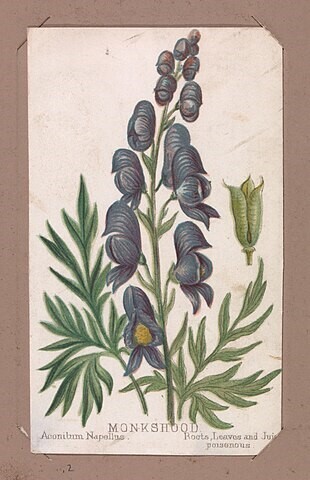
Bythe time of the first Emperor Augustus - end of the first century BCE and startof the first CE - the poet Horace was writing about poison mixed with honey tohelp speed up the death of a parent who is lingering too long for the heirs.And poisoners even gained celebrity status: at a time when few women are evennamed in our sources, Canidia the witch features in Horace, while the historianTacitus tells us of a woman called Martina, so notorious in her home provinceof Syria that when a member of the Imperial family died there, Martina wasarrested and shipped to Rome for questioning. Unfortunately, she had hidden atiny phial of poison twisted up into her hairstyle, and she committed suicidebefore giving the authorities the answers they wanted.

About the Author:

Fionaspent many years teaching Latin and Greek before becoming a writer of Romanhistorical novels. She has just published Poetic Justice, the firstin a series of mysteries starring the poet Ovid.
Website: https://fionaforsythauthor.co.uk
X: @for_fi
Amazon page: https://www.amazon.co.uk/stores/Fiona-Forsyth/author/B001KI2DEC
Readers, I've included a buy button for Fiona's book if you'd like to check out her stories.

Guest Post by Historical Fiction Author Fiona

Welcometo the Book’s Delight. Today we are excited to have a guest post by authorFiona Forsyth. If you want to read more about her, you can check out her authorinterview here.
Poisonand Rome
Ihave a theory that every writer of historical fiction at some point findsthemselves researching poisons. Herbs, medicines, drugs – they’ve been part ofhuman life since the first child scraped a knee and the first chef decided thatmaybe a pinch of pepper was needed to spice up that mammoth stew. But herbsattract superstition and fear, and my lovely Romans were no different. Forthem, knowledge of herbs led quickly from healing to witchcraft and poisoning.

In331 BCE, according to the historian Livy (who wrote at the end of the firstcentury BCE), there was a plague in the city of Rome, and 20 women were foundconcocting potions – potions which they said would help in the fight againstthe disease. When they were forced to drink their own potions, the women diedand further investigation brought another 170 women to be condemned. “I wouldbe glad,” says Livy sadly, “if this was a false report.” The mix of disease,potions, women and poison may be hard for Livy to report, but he reports itnonetheless, and adds that prior to this there had never been an investigationinto poisoning in Rome.

Bythe time of the era in which I set my books, poison is a subject for rumour andgossip and even mentions in the lawcourts – the dictator Sulla set up a specialpermanent court to deal with assassinations and poisonings in about 81 BCE. Plinythe Elder tells us of accusations of aconite poisoning in a notorious lawcourtspeech – in 56 BCE Caelius Rufus was prosecuting Calpurnius Bestia forelectoral bribery but as was common in Roman speeches, he threw in an extrasmear. Pliny reports: “The ancients agree that aconite is the swiftest poison,and only has to touch the genitals of female animals for death to occur withina day. It was with this poison that Calpurnius Bestia poisoned his wives whilethey were sleeping – hence Caelius’ heated speech accusing Calpurnius’ finger.”The accusation has everything – sex, horror and the unspoken hint of cowardice,because Calpurnius used poison, a woman’s weapon. (Steven Saylor makes a greatstory out of this episode in his excellent novel “The Venus Throw.” I recommendit!)

Bythe time of the first Emperor Augustus - end of the first century BCE and startof the first CE - the poet Horace was writing about poison mixed with honey tohelp speed up the death of a parent who is lingering too long for the heirs.And poisoners even gained celebrity status: at a time when few women are evennamed in our sources, Canidia the witch features in Horace, while the historianTacitus tells us of a woman called Martina, so notorious in her home provinceof Syria that when a member of the Imperial family died there, Martina wasarrested and shipped to Rome for questioning. Unfortunately, she had hidden atiny phial of poison twisted up into her hairstyle, and she committed suicidebefore giving the authorities the answers they wanted.

About the Author:

Fionaspent many years teaching Latin and Greek before becoming a writer of Romanhistorical novels. She has just published Poetic Justice, the firstin a series of mysteries starring the poet Ovid.
Website: https://fionaforsythauthor.co.uk
X: @for_fi
Amazon page: https://www.amazon.co.uk/stores/Fiona-Forsyth/author/B001KI2DEC
Readers, I've included a buy button for Fiona's book if you'd like to check out her stories.

Author Interview: Laurie L. Nave

JMR-Welcome to theBooks Delight, Laurie. First of all, wow! Beautiful Cover! Tell our readers where you live, what you do for fun andwhat does the perfect day look like?
LN- I live in northwestAlabama and work in Huntsville. I enjoy reading, nature, spoiling my dachshund,singing, and drawing. For me, a perfect day would start when I woke without analarm 😊.I’d get up, putter a bit, have some caffeine, and go to the gym. Afterward, I’dgo home and write with a comfort show in the background (probably Supernatural,Grimm, or Criminal Minds), stopping for lunch that involves tacos and cheesedip. I’d pick up my iPad and draw a bit, talk the dog on a trail walk, andmaybe sneak in a little nap. I’d end having dinner with my husband, watchingsomething nice on Netflix, and climbing into bed.
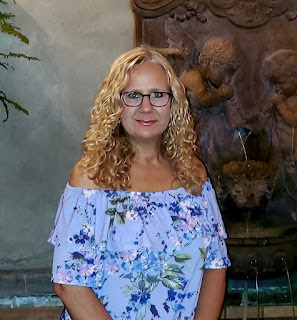
JMR-What’s yourfavorite historical time period? Why?
LN-When it comes toBritish/European romance, I enjoy the Regency period. By I love readingAmericana set in the WWII era, and I have a special place in my heart andmemory for the 1960s/1970s Judy Blume era.
JMR-Who is yourfavorite historical figure? Why? If you could ask them one question, what wouldit be?
LN- I’d love to knowmore about Martha Washington. What was it like to be a woman and George’s wifeduring the birth of our country? I’d also like to hear the whole John Smith newworld story from Pocahontas’s point of view.
JMR- Great answer. I've love to hear Pocahonta's side of the story!
JMR- You’ve writtenmysteries and children’s books; how did you come to be a writer of historical fiction?
LN- While I was livingin South Alabama (near Mobile), I became interested in the whole Mardi Grashistory, which led me to talking with a few amateur historians about aspects ofpre-Civil War New Orleans. While still in the south, it was more progressive inmany ways than the rest of the region. I also moved back to my home town ofFlorence soon after, and there is a rich history here as well. When my FlorenceMC became involved in a scandal that might embarrass the family, I thoughtsending her to live with a taciturn aunt – a strict, pious woman surrounded bya bit of debauchery - in New Orleans would be interesting.
JMR- Did you visitanyone of the places in your book? Where did you feel closest to yourcharacters?
LN- I have been to NewOrleans several times, and I found maps and articles related to the early-mid1800’s that gave me a better frame of reference. I lived in the Florence areafrom 1969-1994, and I live there again now. I feel closest to Priscilla when I’min downtown Florence wandering among the historic homes.
JMR- Laurie, tell usabout your historical romance book, Where Magnolias Lie.
LN- Priscilla andNicholas have been friends since they were small children. Priscilla watchedher parents’ cold and tumultuous marriage and determined that life would neverbe for her. She had no idea Nicholas was in love with her. A jealous rivalarranges a scandal involving the two lifelong friends, and Priscilla’s fathersends her to live with his very religious and dour sister. Priscilla isheartbroken, but she learns to live within her aunt’s rules…until one day, whenshe gets lost in New Orleans, and the owner of a well know ballroom and brotheltakes her home. She then becomes a prisoner in her aunt’s home.
Nicholas buries hisheartbreak in work, a new town, and the various types of private entertainmentsingle young men could enjoy for a price. When his business takes him to NewOrleans, he decides to visit the famous ballroom, hoping to find intimate companionship.However, the last person he expects to see descending the staircase is hisfirst love, Priscilla.
JMR-What projects doyou have in the pipeline?
LN- I am currentlyworking on two projects. One is A Greater Kin, a literary fiction adoptionstory loosely based on my own and set in North Alabama, Michigan, and Mexico. Iam also revising a YA urban fantasy, Mea Tulpa, that I have previouslypublished on Kindle Vella.
JMR- Tell our readershow to find you on social media and the web:
JMR- What question wereyou hoping I’d ask but didn’t?
LN- Oh my goodness…whatother arts pursuits am I interested in, a little of my adoption story, why mydog is so fabulously cute and spoiled…anything you want except my weight 😊
JMR- Thank you Laurie for dropping by and chatting with us. Readers, I've included a buy link for you to follow to see Laurie's book on Amazon. Be sure to check it out.

January 3, 2024
Interview with author G.L. Francis

Welcome Readers to another installment ofour author interview series. Today we have the pleasure of chatting with G.L.Francis, author of historical fantasy.
JMR-Welcome to the Books Delight, G.L.Tell our readers where you live, what you do for fun and what does the perfectday look like?
GLF- After a lot of moving when younger, Isettled in Missouri, my family’s home State. Aside from writing & reading(as much passion as fun for me), I enjoy many hobbies/interests, among themdrawing, watercolors, occasionally book illustration, metalwork, fiber arts,gardening, carving, working annoying & playing with our pets…
For me, a perfect day is spending time on one creative pursuit after another,alone or with my hubby (some of our interests coincide). Preferably withoutshopping or major/minor catastrophes.

JMR-What’s your favorite historical timeperiod? Why?
GLF- To look at my personal library’shistory section, it’d be hard to discern a favorite time period, but there’s aslight predominance ranging from ~1830 to 1950. The 1st& 2ndIndustrial Revolutions heralded so many rapid changes—both good and bad--thatimpact our lives to this day.
Part of my interest is also because I’mold enough to have known people—relatives, family friends &acquaintances—who lived in the late 1800s. I loved listening to them relatefirsts they encountered (e.g. telephone, motorcar, biplane, etc.), their personaltragedies & triumphs before/through/after two World Wars.
JMR-Who is your favorite historicalfigure? Why? If you could ask them one question, what would it be?
GLF- I don’t really have a favorite,though the one question I’d ask any historical figure I might consider is “Whatwere you thinking ‽ ‽”
But that’s a hindsight question, spokenfrom the luxury of seeing how one event or one person’s actions/decisions/etc.played out over time. Removing modern lenses (& cultural filters) isdifficult but important to better grasp things of an era decades or centuriespast.
JMR- How did you come to be a writer ofhistorical fantasy?
GLF- Because sometimes I’m the writerequivalent of a mad scientist. 😊
But I enjoy experimenting with genres,forms, voices—pushing boundaries of what story can be & boundaries of whatI can write. Blending history & fantasy started with a short storyexperiment that challenged, exhilarated, & occasionally terrified me. Iloved it!
JMR- How would describe historical fantasyto a reader new to the genre?
GLF- Short versions: alternative history,mashup, blend, hybrid of history & fantasy genres.
Longer description: a genre in whichhistory & fantasy underpin each other though not equally balanced.Depending on the story, however heavy the history side may be, the scale tipsslightly or greatly more on the fantasy side.
JMR- G. L., tell us about your book, SuntosunCircus.
GLF- At the simplest, Suntosun Circusbegins with the birth of an international 5-ring troupe (with sideshows) in theearly 1900s. Amid trials & triumphs, travels & performances, theycovertly hunt demonic doppelgängers breaching the borders of reality.
Less simply, there are 5 MCs (5 rings),& the story is constructed as a circus: audition calls, rehearsals, debut,on through to finale. Despite their inner & interpersonal struggles, theyunite to defend humanity from the destruction & death the demon doubles ofworld leaders & influencers-to-be can do. In Suntosun Circus, one ofthese doppelgängers is a young Grigori Rasputin; another is King Leopold II ofBelgium.
They travel in an airship fleet powered by an elemental dragon Whipping theStorm. The airships convert to the circus tents (Aside: Remember the hobbiesmentioned? Someday I’d love to blueprint & build a half-hull airship model,maybe Tuscan Red or Mind the Trees. Alas, it is not this day!)
Because most of the troupe isn’t human (one MC is a werecrocodile) & haveextreme longevity, the sideshows are brief backstories (decades or centuries inthe past) affecting the main storyline.
And because they’re international as wellas (mostly) nonhuman, some MC voices have signature qualities of their nativegrammar in POV prose as well as dialog, not always correct English. Ditto forthe dragon’s conlang.
Early during my research for SuntosunCircus, I wrote Tools of the Trade, a prequel novelette introducingsome of the troupe’s cast in 1899 before the circus forms. AdeCiroPublications, the indie press that published Suntosun Circus, reedited& released Tools of the Trade a year ahead of my circus novel.
JMR-What projects do you have in thepipeline?
GLF- As a multi-WIP writer, right now I’mjuggling 7 (8?) projects.
Under Every Moon(fantasy poetry), Leyfarers and Wayfarers (short story collection), and Lairof Beasts (novel, portal fantasy) are simply re-edits & tweaks onpreviously published books (the publishers closed) so I can re-release them.
Historical-fantasy Suntosun Seasonsmoves into 1904 but is in first draft stage. I debate with myself whether tomake it 2 books; the circus splits to perform/hunt on 2 continents. Becausethey’re concurrent, I’m considering Suntosun Seasons: Africa & SuntosunSeasons: Europe. Decision pending.
Sunrise on the Delta (novelette) closes a cycle of short stories aboutharp-ships, a compass-lute navigator, & a giant sentient spider.
Triptych: Fate’s Door(novella) closes a science-fantasy cycle about the cybernetic navigators ofevacuation spaceships.
“Rock Paper Scissors” is a creativenonfiction essay.
These last 3 are for separate collections(as yet untitled), & each includes affiliated short works previouslypublished in magazines, journals, or anthologies.
JMR- Tell our readers how to find you onsocial media and the web.
GLF- Find me at the following:
Twitter (or “X”) https://twitter.com/merelecroix
Facebook https://www.facebook.com/glynda.francis
LinkedIn https://www.linkedin.com/in/glynda-fr...
Pinterest https://www.pinterest.com/glyndafrancis/
Goodreadshttps://www.goodreads.com/author/show...
My (too frequently neglected) blog isJourneys of the Clayfoot https://clayfoot2.wordpress.com/
My online & social media presence,however, is somewhat limited, & I’m still a working person, now part timeat a veterinary hospital.
JMR- What question were you hoping I’d askbut didn’t?
GLF- I was a bit surprised there wasn’t aquestion about research, either for historical fantasy in general or for SuntosunCircus in particular. Depending on the story itself, the depth of researchvaries tremendously for historical fantasy in general. In my experience,fantasy in historical settings needs a different kind of research from fantasyusing actual historical events &/or people for the sake of verisimilitude.
Research for Suntosun Circus took~5 yrs before I did more than scene notes & rough sketches. What I didn’trealize until well into the 1st draft was that my intended arc for thecircus wasn’t going to fit in one book. So, 90% of background work for thesequels is done.
(Life Lesson Metaphor: Don’t buy a whole bolt of fabric to make ahandkerchief.)
JMR- Thank you, G. L. , for stopping by.Your books look really interesting! Readers, I’ve included a link to G. L.’s booksbelow. Please be sure to check them out.

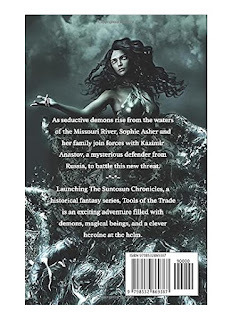

January 2, 2024
Interview with Author Marianne Ratcliffe

Welcome Readers toanother installment of our author interview series. Today we have the pleasureof chatting with Marianne Ratcliffe, author of two sapphic historical romancenovels.
JMR-Welcome to theBooks Delight, Marianne. Tell our readers where you live, what you do for funand what does the perfect day look like?

MR- I live in Chesire withmy wife and three dogs (two Cavalier King Charles spaniels and a black labradorwe’ve inherited because my wife’s mum can no longer look after him). A perfectday would be taking the dogs for a walk on a crisp autumn morning – we arefortunate to have so many lovely walks nearby, as we are right next to the PeakDistrict. This would be followed by tea and cake, or an all-day breakfast if wewere being particularly indulgent! The rest of the day would be spent writingor reading, before finishing off with some TV and a glass or two of wine.
JMR-What’s yourfavorite historical time period? Why?
MR- The Victorian era,because it was a time of such huge change – social, scientific, philosophical. Althoughthere was still great disparity, we start to see real opportunities for womenand for social mobility. This sense of revolution, that all things are possible,makes it the perfect backdrop for telling stories. It is also a period that isvery accessible to modern day readers and writers, with so much literature andinformation available for research.
JMR-Who is yourfavorite historical figure? Why? If you could ask them one question, what wouldit be?
MR- Jane Austen, withouta doubt. Because she was clever, witty and observant, and because she wrote sixof my favourite books. I would ask what would have happened in her twounfinished novels (The Watsons and Sanditon) and what was in those letters thatCassandra felt she had to burn for the sake of your reputation.
JMR- You trained as abiochemist; how did you come to be a writer of historical fiction?
MR-You can’t be ascientist without having an interest in history. All scientific discoveries arebuilt on what has come before. Without understanding what is already known, youend up going in the wrong direction, or reinventing the wheel. However, my loveof historical fiction comes reading novels written in past eras. Austen,Dickens, Trollope and Gaskell transported me into their worlds, and I love torevisit them in my own writing.
JMR- Did you visitanyone of the places in your book? Where did you feel closest to yourcharacters?
MR- My settings arefictional but based in reality. My first historical novel, The Secret ofMatterdale Hall is a gothic mystery set in Yorkshire. When I was younger, Iloved hiking, and crossed the Yorkshire Moors more than once. Those experienceshelped me create the mood for Matterdale Hall, which is of chilly winds and isolation,where breathtaking beauty lives side by side with terrible danger.
I also enjoy visitingNational Trust or English Heritage properties. I never visit a country housewithout an eye for authentic details that I can include in my writing.
JMR- Marianne tell usabout your new book, A Lady to Treasure.
MR- A Lady toTreasure is a traditional-style Regency romance (closed door, languageappropriate to the period), but the main love story just happens to be betweentwo women. Louisa Silverton has been raised to value only money and profit, butwhen she meets the unconventional and charismatic Sarah Davenport, she startsto understand that there may be things of greater value than money. Sarah isworking tirelessly to save her family estate from ruin. She despises marriageas an institution that subjugates women and cannot understand why someone sointelligent as Louisa is so eager to sacrifice herself for financial gain.
I like my stories to beabout more than just two people falling in love, and in addition to the centralromance, A Lady to Treasure explores contradictions around money, and whata strong, independent woman might achieve within the bounds of the social andlegal constraints of the time.
JMR-What projects doyou have in the pipeline?
MR- I’m currently workingon a book set in 1870s Kansas – it started out as a fairly standard Western,with a romance subplot (sapphic, of course!) but in the course of research Irealized there was much more going in Kansas at that time than we generally seein film and literature. It was such a fascinating time, politically andsocially. Kansas was a real melting pot of ethnicities, religions andbackgrounds, and the choices people made in the second half of the nineteenthcentury had huge implications. I’m enjoying weaving these aspects into thenarrative.
JMR- Tell our readershow to find you on social media and the web.
MR- I have a website (www.marianneratcliffe.com),where you can sign up to my newsletter. I am also active on Twitter/X andinstagram (@ratcliffe_mj)
JMR- What question wereyou hoping I’d ask but didn’t?
MR-I often get askedwhy I write sapphic historical fiction, when by far the biggest market forlesbian fiction is contemporary romance. The simple answer is that many of myfavourite books were written in the Victorian and Regency periods but it’salmost impossible to find any that feature lesbians. If sapphic love was hintedit, it was usually in the context of moral depravity. The lack of lesbian andgay representation in the literature of the past is a constant reminder thatacceptance of homosexuality is recent (and still not complete). In my writing,I try to create the illusion that my book was written in the relevant era. Iwant the reader to imagine picking up The Secret of Matterdale Hall or ALady to Treasure in dusty old library next to a copy of Pride andPrejudice or The Woman in White. It seems to me there is a gap tofill, a need to remind everyone that lesbians have existed throughout history. It’sjust that we weren’t allowed to tell our stories back then.
JMR- Thank you, Marianne,for stopping by. Your books look really great! Readers, I’ve included a link toMarianne’s books below. Please be sure to check them out.

January 1, 2024
Interview with author Anne Armistead

Welcome Readers toanother installment of our author interview series. Today we have the pleasureof chatting with Anne Armistead, author of historical fiction, historicalfantasy, time travel and contemporary romance.
JMR-Welcome to theBooks Delight, Anne. Tell our readers where you live, what you do for fun andwhat does the perfect day look like?
AA- Hi, Jeanie! HappyNew Year. I live in Peachtree Corners, Georgia, a small town north of Atlantaand part of the Metro Atlanta Area. For fun, I spend time with my preciousgrandsons and my “grand pups.” Parks is two and Max is three months. I havefour grand pups, all rescues, named Jobe, Mazzie, Buddy, and Goose. I alsoenjoy walking, listening to podcasts, watching BBC television, reading, and ofcourse, writing. A perfect day is one during which I do all my fun things!
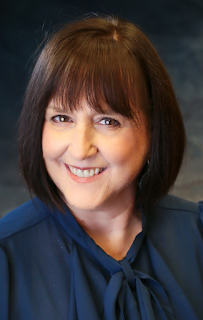
JMR-What’s yourfavorite historical time period? Why?
AA- I love old moviesfrom Hollywood’s Golden Era of 1930s-1940s, so I would have to say that’s myfavorite historical time, especially the World War Two era. Second to thatwould be 1920s because of the Lost Generation authors and poets and of course,their time in Paris.
JMR-Who is yourfavorite historical figure? Why? If you could ask them one question, what wouldit be?
AA- As an AmericanLiterature major, I studied Ernest Hemingway and his approach to his writingcraft. I would love to ask him about how he really felt when he learned hiswife at the time, Hadley, had packed all his writing in a suitcase, includingcarbon copies, to bring to him in Switzerland and then lost the suitcase at theGare de Lyon. I once lost the most recently revised version of a manuscript onmy computer and cried for hours. When I began revision again, I rewrote thescenes so much better. Did Hemingway believe losing all his work made him abetter writer? A different kind of writer? (And what did he say to Hadley whenhe learned what happened?)
JMR- How did you cometo be a writer of historical fiction?
AA- Writing historicalfiction merges my two loves – literature and history. As a child, anything fromthe past intrigued me, including my mom’s old clothes, hats, and jewelry andher old books which comprised my first “holed up in my bedroom reading”experiences. I fell in love with old movies and loved talking about them withmy mother. I always wished I could travel back in time into the setting of thehistorical novel I was reading or the movie I was watching. I almost majored inhistory as an undergraduate, but my love of literature won. However, as anEnglish teacher, I integrated history into the study of assigned novels, sostudents understood the culture that shaped the writing. My creative thesis formy MFA in Creative Writing was a prose poem novel set during the Depression,and it required much historical research, which I adore. My longing to be atime traveler led me to write “A Tryst in Paris.”
JMR- You write inmultiple genres; do you have a favorite? Which is more fun to write?
AA- I love writinghistorical fiction with elements of romance because I can lose myself forstretches of time in the research of events in history and create how to wrapthe reality of those events into the fictional lives of my characters. However,I do enjoy writing contemporary sweet romance because I can write at a fasterpace, which is rewarding.
JMR- Did you visitanyone of the places in your book? Where did you feel closest to yourcharacters?
AA- For “DangerousConjurings,” I infused Leah’s intrigue and curiosity with my own reactions whenI visited Marie Laveau’s tome and the Marie Laveau House of Voodoo in NewOrleans. I felt closest to Leah when I stood on the banks of the OgeecheeRiver, which helped me write the scene when in emotional anguish she jumpedinto its water. For “With Kisses from Cécile,” during a trip to Paris, I hadthe surreal experience of re-reading Cecile’s letters while standing at theaddress she once lived. She became so real to me, as if she stood by me. Also, duringanother trip to Paris when I was writing “A Tryst in Paris,” I visited theLuxembourg Carousel, the story’s time travel portal, and stared into the elephant’s eyes, quotingthe Ranier Maria Rilke’s poem “The Carousel-Jardin de Luxembourg.” I felt sweptback to 1900 as Mirabelle.
JMR- Anne, tell usabout your new book, A Tryst in Paris.
AA- When MirabelleMontgomery visits the Luxembourg Carousel in Paris, a mysterious time shiftersweeps her into the Carousel’s time travel vortex and transports her to 1900Paris. Her return will be allowed once she completes her mission to restore aman’s fate gone wrong. But whose?
Upon meetingdangerously sexy Jacques Thibaut, Mirabelle believes she has found her man. Hislife’s purpose as a stellar police detective has been derailed by accusationsof his plotting with anarchists to overthrow the French government.
If she proves Jacquesto be innocent, his life will be reset to its rightful providence. He will winback his job and those who once believed in him, including the woman he plannedto marry.
Mirabelle’sdetermination to complete her mission kindles passion between them. But theirfalling in love will jeopardize everything, for his true destiny does notinclude her. Besides, even if her heart desires, she cannot remain in 1900Paris . . . can she?
JMR- I read and enjoyedA Tryst in Paris, especially the detailed descriptions of Paris! Howhard is it to get convey the real flavor of a setting given that it is set inthe past?
AA- When I envisioned writing“A Tryst in Paris,” I worried about how I could place the reader into Paris of1900. I focused first on fashion. If I were transplanted into that time era, Icould not imagine going from the comfort of today (i.e., yoga pants) to thediscomfort of then (for one thing- corsets!). One of my daughters majored inapparel merchandise and struggled through the required survey course of historyof costume. She linked me to her professor of that course, who kindly schooledme on the 1900 fashions and designers. I learned about the fabulous JeannePaquin and knew she’d be important to my story. I turned to YouTube, whichoffers a vast collection of silent films of 1900, especially of the Exhibition,which helped me feel as if I were living in the Paris of that time. I foundmaps of the Exhibition and a tourist guide written for Americans visiting theExhibition, which helped me understand the “lay of the land,” so to speak, formy 1900 setting. I researched the political scandals, news that made headlines,and celebrities of the day to see what events my character could be pulled intoduring her time travel. From my research, I chose to integrate into the storywhat I found the most intriguing and compelling. I tried to shape the detailsas interestingly as possible to appeal to the reader. I hope I succeeded inpulling the reader in!
JMR-What projects doyou have in the pipeline?
AA- I am researchingfor Book Two of The Carousel Time Traveler in which Mirabelle again timetravels to Paris, this time during 1925. I am writing a sweet contemporaryChristmas “grumpy-sunshine trope” romance between a firefighter and a socialmedia influencer, tentatively titled “Hearts Aglow Under Mistletoe.”
JMR- Tell our readershow to find you on social media and the web.
AA- Readers can visitmy website https://www.annearmisteadauthor.com
to find my social media links and learn moreabout me and my books. You can also find my social media links at https://linktr.ee/annearmisteadauthor
JMR- What question wereyou hoping I’d ask but didn’t?
AA- I love sharingabout the charities I support, especially The Feeney Legacy Project (FLP, https://www.feeneylegacyproject.org), on which I serve on its advisory board. FLP’s mission is to advocate beingsomeone’s second chance by calling 911 and administering CPR to a person incardiac arrest. FLP also educates about the protection of the Good Samaritanand 911 Amnesty Laws when making a good faith effort to save a life. FLP isdedicated to the memory of my nephew Feeney Armistead, who could have had asecond chance at life if a bystander had taken such action.
To learn about othercharities I support, visit my website at https://www.annearmisteadauthor.com/charity
JMR- Thank you, Anne,for stopping by. Your books look really great! Readers, I’ve included a link toAnne’s books below. Please be sure to check them out.

